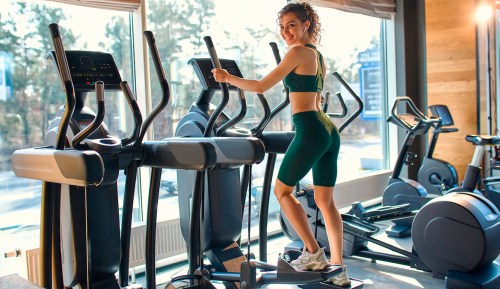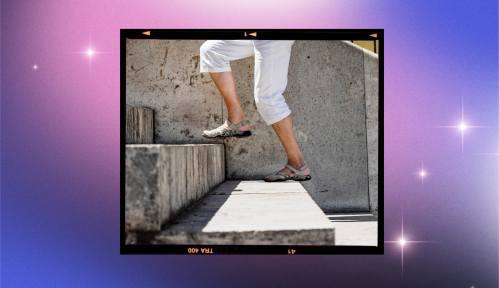The one thing runners can do to improve their performance—without training more
Here are three pro techniques to help you improve your breathing while running to optimize performance.
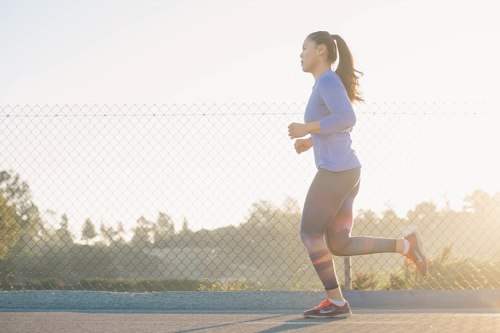
When you’re running and start to get tired, or worse, a side cramp develops, it’s easy to panic and feel defeated. But if you just concentrate on your breathing, you can help give your body the reset it needs to push through to the finish line.
“Breathing is a performance enhancement, especially for runners,” says Kristin Keim, MA, PsyD, a clinical and sports psychologist. “In some sports, like swimming, breathing is inherent, but for many runners, breathing is an underutilized tool.” Indeed, a 2010 study shows that sustained daily breathing exercises can significantly reduce the amount of oxygen your breathing muscles need during exercise, thus providing you with greater endurance.
The sympathetic nervous system in your body gears up for a fight-or-flight response when a race is about to begin. Your heart rate and blood pressure increase, and you might even start to sweat. This stressful state can cause heavy breathing in the chest and lungs, but Keim says instead to focus on breathing from the diaphragm.
“Breathing is a performance enhancement, especially for runners.” — Kristin Keim, MA, PsyD
“We emphasize breathing [from] the diaphragm,” Keim explains because doing so can reduce cortisol levels and exercise-induced oxidative stress. Your diaphragm is the dome-shaped muscle located at the base of your lungs. When you inhale, it contracts and moves downward, increasing the space in your chest cavity for your lungs to expand. “Breathing should come from our core because it’s our powerhouse,” she says.
Keep reading for breathing tips that runners should try next time they lace up their sneakers.
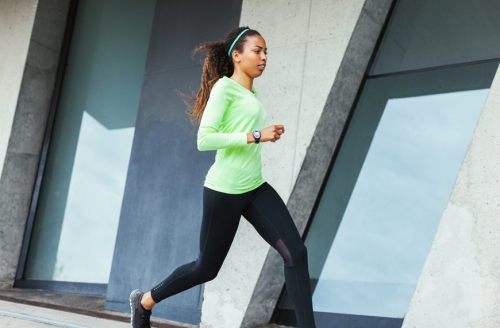
The circle breathing technique
Keim recommends runners practice circle breathing, a technique that promotes relaxation, confidence, and focus, both before and after a race. “Circle breathing helps you create an appropriate arousal level for running, so you can control your effort and boost efficiency,” she says.
Here’s how to do it: Inhale deeply and slowly through your nose, and expand the air in your chest and belly from top to bottom. Imagine yourself as a wave or balloon, and hold the breath for a moment before exhaling deeply through your mouth. Feel your shoulders and back relax. “It’s also an internal dialogue of breathing in positive energy and exhaling negative energy. That’s why when you exhale, you really need to push that air out,” Keim explains.

It’s all about posture
When it comes to breathing, posture matters. Katie Mackey, a professional runner for the Brooks Beasts, says sports that require back extension, like running, can cause the diaphragm to stay in a contracted position when you inhale. This can affect how your ribs, shoulders, pelvis and hips move. “I use breathing as a tool to position my diaphragm, abs, and pelvic floor,” she says. “The most efficient position for running is when your diaphragm and pelvis are parallel to each other, and the muscles in your core are engaged.”
One of Mackey’s preferred breathing techniques to help ensure that her diaphragm and pelvis are aligned is to lie down on her back with her legs on a chair or couch. “I have a pelvic tilt and press down on my heels, so I can engage my hamstrings. Then, I breathe in through my nose and expand my diaphragm, allowing air to fill my rib cage and the intercostal muscles,” Mackey says. (The intercostal muscles run between your ribs and help with breathing.) “When I exhale, I use my abs to push the air out. This promotes a good breathing pattern for running.”
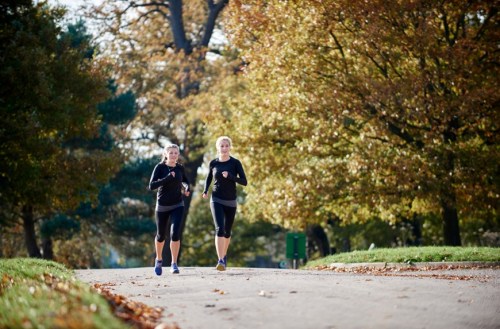
When nerves—or a cramp—hits, bring your focus back to your breathing
No matter how much you train, sometimes you might not feel so hot and want to stop running—but don’t! Instead, just bring your focus back to breathing, Mackey says. “When things don’t go according to plan, the emotional response is to waste energy and have feelings of panic,” she says.
Instead, concentrate on even breaths. “I breathe in a couple of strides and breathe out a couple of strides,” she says.
While your sympathetic nervous system takes over when running, breathing helps your parasympathetic nervous system, AKA the control center for relaxation, to balance your arousal levels and help you stay calm. “Breathing is like a filter for your body,” says Keim. “When you’re able to quiet your mind, all that energy coming out of your belly feels that much more powerful.”
Runners, take note: You should be concentrating on your upper body during training, too. And here’s why bootcamps can help you meet your fitness goals, science says.
Sign Up for Our Daily Newsletter
Get all the latest in wellness, trends, food, fitness, beauty, and more delivered right to your inbox.
Got it, you've been added to our email list.



